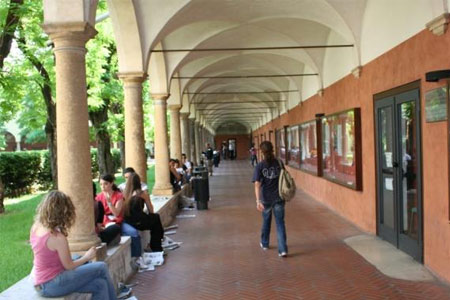- Didattica

Semestre filtro
Corsi di laurea
Corsi di laurea magistrale
POST LAUREA
- Facoltà
- Segreterie e sedi

Segreterie
Strutture
- Persone
- MY UNIVR
-
| I semestre |
To view lesson hours, consult click in order to view the timetable here
click in order to view the timetable here
The goal of this course is to provide the basic knowledge about the Information and Communication Technology as well as practical skills about the use of the main computer applications.
introduction to computer science;
historica view of computer science;
solving a problem: analysis, description, execution
problems, algorithms, elementary actions, subproblems
control structures
example of algorithms: computing the maximal between two numbers
flow diagrams: instructions, syntax, semantics
elementary data: numbers, characters, Booleans, strings
structured data: arrays and records
subprograms
conditions about the existence of information
information coding: bit and byte
a coding for the day of the week
a coding for the characters: ASCII and UNICODE
a coding for natural numbers: binary numbers
analogic and digital
advantages of the digital vs the analogic
quantization and sampling
transmission on a channel: interference
error detection through a redundant code: parity bit
computer architecture
central processing unit
data and address bus
control unit, arithmetic-logic unit, registers
fetch-decode-execute cycle: clock frequence in Megahertz
Moore law
pipeline and multiprocessors
central (electronic) memory: RAM and ROM
magnetic memory
hard disks: cylinders, tracks and sectors
floppy disks
tapes
optimacal disks (CD-ROM)
input/output devices
printers, keyboards, monitors, mouse
computer networks: internet
client-server network
the operating system: its functions
resource allocation and virtualisation
the application software and the operating system
the allocation of the processor: multiprogramming
programs and processes
time-sharing amongst processes
process state: active, ready, waiting
memory allocation: swapping and paging
peripherals allocation: spooling, drivers, plug & play
file system: files and directories
user interface: shell and graphical interfaces
internet and the TCP/IP protocol
address resolution: DNS
applications: user interface, application logic and data organisation
filters and data sharing
data compression
cryptographi for data sharing
internet security: viruses and spam
The exam is made up of two tests: a practical test which shows the ability of using some application software (such as a word-processor and a spreadsheet) and a theoretical test, which consists in 24 questions with multiple possible answers. The two parts of the exam can be done at different moments.
© 2002 - 2025
Verona University
Via dell'Artigliere 8, 37129 Verona |
P. I.V.A. 01541040232 |
C. FISCALE 93009870234